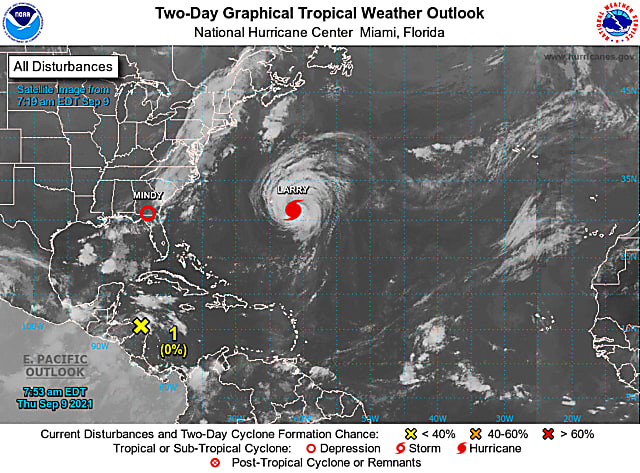The european malignant hyperthermia group has published some nice guidelines in 2010, which offer an excellent overview of this topic.
This demonstrates just how much of this training program was borrowed from the college of anaesthetists. This severe reaction typically includes a dangerously high body temperature, rigid muscles or spasms, a rapid heart rate, and other symptoms. Identify and treat malignant hyperthermia (mh) in the intraoperative setting in an organized team. Discuss differential diagnosis of mh. malignant hyperthermia (mh) is a rare, but dramatic, hypermetabolic reaction that individuals can experience if they are susceptible to certain anesthetic agents.

Symptoms include muscle rigidity, high fever, and a fast heart rate.
malignant hyperthermia is a severe reaction to certain drugs used for anesthesia. Give half of normal dose of inhaled triggering agents c. The malignant hyperthermia association of the united states, the ambulatory surgery foundation, and the society for ambulatory anesthesia have jointly developed transfer guidelines for patients who develop acute mh in an asc. Successful management of malignant hyperthermia depends upon early diagnosis and treatment; 2/37 (5.4%) sunohara, et al. Mh occurrence with a nondepolarizing nm blocker is a very rare phenomenon. The north american malignant hyperthermia registry (namhr) was established in 1987 and merged with the malignant hyperthermia association of the united states (mhaus) in 1995 so that data on malignant hyperthermia (mh) could be stored in a site that is supported by one organization (mhaus). A report from the north american malignant hyperthermia registry of the malignant hyperthermia association of the united states. Recognizing and managing a malignant hyperthermia crisis: These episodes are variable in presentation, but manifestations may include hyperthermia, skeletal muscle rigidity, tachycardia, metabolic acidosis, hyperkalemia. Give calcium chloride 1 g iv; This means it's passed down from parents to children. In this issue, a nesthesiology publishes two comprehensive articles on malignant hyperthermia (mh) susceptibility.
2/3 (67%) weglinski, et al. To give the patient the best possible chance for a successful outcome, a swift, coordinated, multidisciplinary team response is necessary. The malignant hyperthermia association of the united states, the ambulatory surgery foundation, and the society for ambulatory anesthesia have jointly developed transfer guidelines for patients who develop acute mh in an asc. D50 1 amp iv (25 g dextrose) + regular insulin 10 units iv. This consolidation offers greater support for research initiatives.

malignant hyperthermia (mh) is a rare reaction to certain medicines used for general anesthesia.
Recognizing and managing a malignant hyperthermia crisis: Death can occur within 24 hours. Previous uneventful anaesthesia does not exclude mh. Readiness for malignant hyperthermia can be survey stumbling block. malignant hyperthermia (malignant hyperpyrexia) (mh) mh is a rare condition that runs in some families. Glahn kp, ellis fr, halsall pj, et al. 6 simulation drills based on best practices enhance communication and teamwork and reduce organizational failures and. malignant hyperthermia (mh) is a type of severe reaction that occurs in response to particular medications used during general anesthesia, among those who are susceptible. The malignant hyperthermia association of the united states (mhaus) is a nonprofit organization dedicated to promoting optimum care and scientific understanding of mh and related disorders. Guidelines from the european malignant hyperthermia group. malignant hyperthermia •a life threatening reaction that is most often triggered by the use of inhalational anesthetics •estimated incidence of 1 in 5,000 to 1 in Identify and treat malignant hyperthermia (mh) in the intraoperative setting in an organized team. These episodes are variable in presentation, but manifestations may include hyperthermia, skeletal muscle rigidity, tachycardia, metabolic acidosis, hyperkalemia.
The inability of hospitals to meet expectations for responding to malignant hyperthermia (mh) is an occasional but persistent problem, recently released data from the centers for medicare and medicaid services (cms) show. Discuss differential diagnosis of mh. The european malignant hyperthermia group has published some nice guidelines in 2010, which offer an excellent overview of this topic. These episodes are variable in presentation, but manifestations may include hyperthermia, skeletal muscle rigidity, tachycardia, metabolic acidosis, hyperkalemia. 2/3 (67%) weglinski, et al.
Obtain abg to rule out:
When it does occur, it happens fast. › posted at 5 days ago Discuss differential diagnosis of mh. The inability of hospitals to meet expectations for responding to malignant hyperthermia (mh) is an occasional but persistent problem, recently released data from the centers for medicare and medicaid services (cms) show. Availability of dantrolene for the management of malignant hyperthermia crises: The european malignant hyperthermia group. A previous apparently uneventful general anaesthetic does not exclude the possibility of a malignant hyperthermia (mh) reaction on subsequent exposure to mh triggering drugs. It has been associated with virtually all neuroleptics, including newer atypical antipsychotics, as well as a variety of other medications that affect. Hopkins pm, girard t, dalay s, et al. malignant hyperthermia (mh) is a rare autosomal dominant condition, that can present as an acute emergency in susceptible individuals following exposure to a trigger agent such as volatile anaesthetic agents or suxamethonium. Guidelines from the european malignant hyperthermia group. Go to malignant hyperthermia, event #18. Onset can be within minutes of induction or may be insidious.
40+ Malignant Hyperthermia Algorithm Images. Successful management of malignant hyperthermia depends upon early diagnosis and treatment; malignant hyperthermia is a severe reaction to particular anesthetic drugs that are often used during surgery and other invasive procedures. View the mhaus treatment guidelines. A previous apparently uneventful general anaesthetic does not exclude the possibility of a malignant hyperthermia (mh) reaction on subsequent exposure to mh triggering drugs. Guidelines from the european malignant hyperthermia group.
During an mh crisis event, a patient's metabolism speeds up, and the body begins to break down skeletal muscle tissue malignant hyperthermia. These episodes are variable in presentation, but manifestations may include hyperthermia, skeletal muscle rigidity, tachycardia, metabolic acidosis, hyperkalemia.





